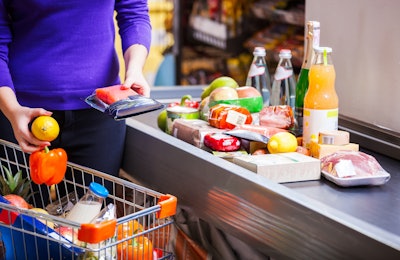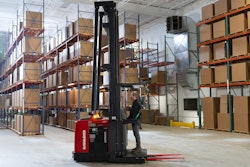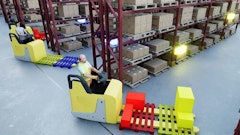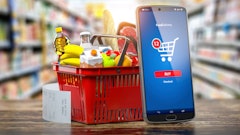
Until recently, if you needed milk or paper towels, you simply went to your local grocer and picked products off the shelf. Now, you can buy all household needs with a few clicks of the computer mouse or taps of your finger on a mobile device. What was once a predominately brick-and-mortar industry is becoming an increasingly digital world. So much so that an estimated 21.5% of total grocery purchases are predicted to be online by 2025, a more than a 60% increase over pre-pandemic estimates. Against this backdrop of evolving shopper behaviors, grocers are grappling with labor shortages and supply chain challenges, which begs the question, how can grocers get an edge to retain shoppers in an omnichannel era?
Combating out-of-stock losses and consumer frustration
A surge in online storefronts with same-day delivery services and user-friendly, integrated apps have made e-grocery appealing to shoppers due to sheer convenience. Customers are likely frustrated by the burden of making a physical trip to the store to ultimately leave empty-handed because the products are out-of-stock. However, ongoing supply chain issues resulting in widespread out-of-stocks continue to sour the consumer experience, whether digital or physical. In fact, according to an analysis by Adobe Analytics, consumers saw more than 2 billion out-of-stock messages online in the month of October 2021. These out-of-stock losses are costing grocers and brands millions of dollars and an immeasurable amount of customer loyalty.
Product substitutions may seem like an easy solution to out-of-stock items for stores, online pickers and customers alike, but providing the wrong substitution for a product could jeopardize the entire customer experience. When shopping for groceries online, customers have limited say on substitution options, leading to frustration and likelihood of seeking another grocer for their next shopping trip. On the grocer’s end, substitutions are both a cause for higher return rates as well as low fulfillment accuracy rates. Getting a handle on precisely what is on the shelf is key to shopper retention and satisfaction.
To combat these issues, many forward-thinking retailers are turning to technology, such as computer vision (CV) and artificial intelligence (AI)-based solutions that enable an accurate read of on-shelf availability (OSA) by keeping an eye on shelves in real time. Rather than worrying about managing customer complaints arising from product availability or unacceptable substitution, stores can concentrate on precise and increased OSA and therefore, customer retention.
Where does technology fit in
CV and AI-based solutions can generate accurate, SKU-level availability data integrated with e-commerce systems to provide real-time information to digital shoppers to better understand product availability. This technology can also provide stores with an effective monitoring and alerting system for OOS items, helping accurately reflect product inventory to store staff and online grocery pickers.
In-store picking from the shelf is a primary method of fulfilling online orders, as it offers several advantages, such as allowing stores to stay flexible and move swiftly between in-store and online fulfilment. However, despite its advantages, in-store picking done by grocery store staff and third-party pickers is expensive. The act of picking takes grocery store staff away from working on more meaningful tasks, and for third-party pickers, it is the most tedious process of the job. For both groups, every minute spent on the floor counts, making the need for automation of the stocking process even more evident.
Proper automated solutions can act as an extension of labor, checking shelves for low supply and misplaced items, without store associates having to physically walk down each aisle. When items are out of stock, the technology is capable of automatically triggering an order for replenishment. To save valuable time and costs associated with an online order, some technology solutions can also guide pickers to the exact location of the items in the store. Using shelf cameras, image recognition and app-based alerts, stores can get real-time visibility on their stock levels anytime, from anywhere. By having full visibility, store managers can make more informed decisions. More specifically, this means stores can replenish shelves quicker, drop out-of-stock rates, meet customer expectations and ensure higher margins for e-grocery.
In conclusion
How can retailers ensure customer satisfaction and keep them coming back during the era of omnichannel shopping? The solution lies in creating a holistic, omnichannel experience — one that heavily relies on shelf visibility and the ability to leverage data in real-time to keep customers informed of their options while remaining mindful of labor costs. In the post-pandemic environment, retailers can retain repeat customers by prioritizing accurate availability in addition to the access and convenience of a digital storefront.
Consumers will always have a need to shop in-store. There are physical experiences, like selecting a ripe avocado or smelling a baguette fresh from the bakery, that cannot be replicated in a digital environment. Customers are savvy enough to understand which items can be reliably purchased online and which require a physical trip. It is up to retailers to make both of those experiences as dependable and easy-to-use as possible.



















